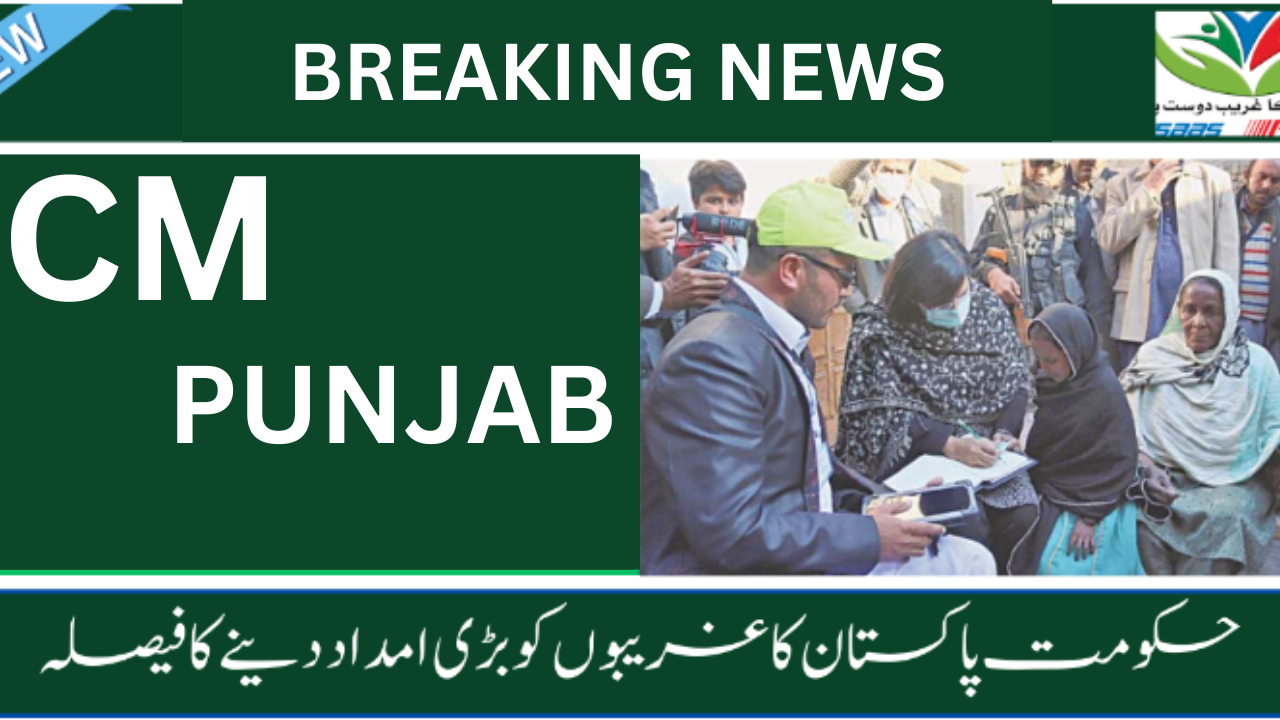latest unbeliveable News: Caretaker Government Again Starts Ehsaas Program
Unbelievable News: Caretaker Government Reintroduces Ehsaas Program Amid Economic Turmoil
In an unexpected yet pivotal move, Pakistan’s caretaker government has announced the reintroduction of the Ehsaas Program, a flagship social protection initiative aimed at alleviating poverty and supporting the country’s most vulnerable populations. This decision has sparked widespread reactions, both of hope and skepticism, given the current economic climate and the temporary nature of the caretaker government.
The Ehsaas Program: A Brief Overview
The Ehsaas Program, initially launched in 2019 under the government of Prime Minister Imran Khan, was designed as a comprehensive poverty alleviation initiative. It encompasses a wide range of sub-programs, including cash transfers, interest-free loans, and scholarships, with the overarching goal of reducing inequality and providing a social safety net for millions of Pakistanis. The program gained significant traction and was hailed as a groundbreaking step towards addressing the socio-economic challenges faced by the lower-income segments of society.
The Caretaker Government’s Decision
Caretaker governments in Pakistan typically have a limited mandate, focusing primarily on ensuring free and fair elections rather than implementing long-term policy initiatives. However, the decision to reintroduce the Ehsaas Program has come as a surprise, raising questions about the caretaker government’s agenda and its ability to manage such an extensive welfare initiative.
The caretaker Prime Minister, in a recent address, emphasized the urgent need to support the impoverished populations in the face of soaring inflation, unemployment, and the economic impact of natural disasters. “The Ehsaas Program is a lifeline for millions, and its continuation is non-negotiable, regardless of the political scenario,” the Prime Minister stated.
Economic Challenges and Skepticism
Pakistan’s economy is currently grappling with a multitude of challenges, including high inflation, dwindling foreign reserves, and a significant debt burden. In this context, the reintroduction of a costly welfare program like Ehsaas has led to concerns about the feasibility of its implementation. Critics argue that the caretaker government may not have the financial or administrative capacity to sustain the program, especially without a clear long-term strategy.
Economic experts have pointed out that while the Ehsaas Program is essential, it requires careful planning and robust financial backing to ensure its success. There are also concerns about the potential for corruption and mismanagement, which have plagued similar initiatives in the past. Given the temporary nature of the caretaker government, some skeptics fear that the reintroduction of the program could be more of a political maneuver rather than a genuine effort to address the economic woes of the populace.
Public Reaction
The public reaction to the reintroduction of the Ehsaas Program has been mixed. For many of the program’s beneficiaries, the announcement has been a source of relief, offering hope in a time of uncertainty. “The Ehsaas Program helped me and my family survive during the hardest times,” said one beneficiary. “I am grateful that the government is bringing it back.”
However, there is also a sense of caution among the population, with many questioning whether the caretaker government will be able to deliver on its promises. The program’s reintroduction has also sparked debates on social media, with some users expressing support while others criticize the move as unrealistic given the country’s economic constraints.
Political Implications
The reintroduction of the Ehsaas Program by a caretaker government also has significant political implications. Some analysts believe that this move could influence the upcoming general elections, as it may be perceived as an attempt to gain favor with the electorate. The decision could potentially put pressure on the incoming elected government to continue or even expand the program, regardless of the country’s financial situation.
Moreover, the timing of this announcement has raised eyebrows, with some suggesting that it might be a strategic move to appease international donors and financial institutions that have been advocating for stronger social safety nets in Pakistan.
Conclusion
The caretaker government’s decision to reintroduce the Ehsaas Program is undoubtedly a bold and surprising move, one that has the potential to significantly impact Pakistan’s socio-economic landscape. While the program’s reintroduction brings hope to millions, it also raises critical questions about the caretaker government’s ability to execute such a complex and resource-intensive initiative in the midst of an economic crisis. As the situation unfolds, the success or failure of this move could have lasting implications for Pakistan’s future, both economically and politically.

